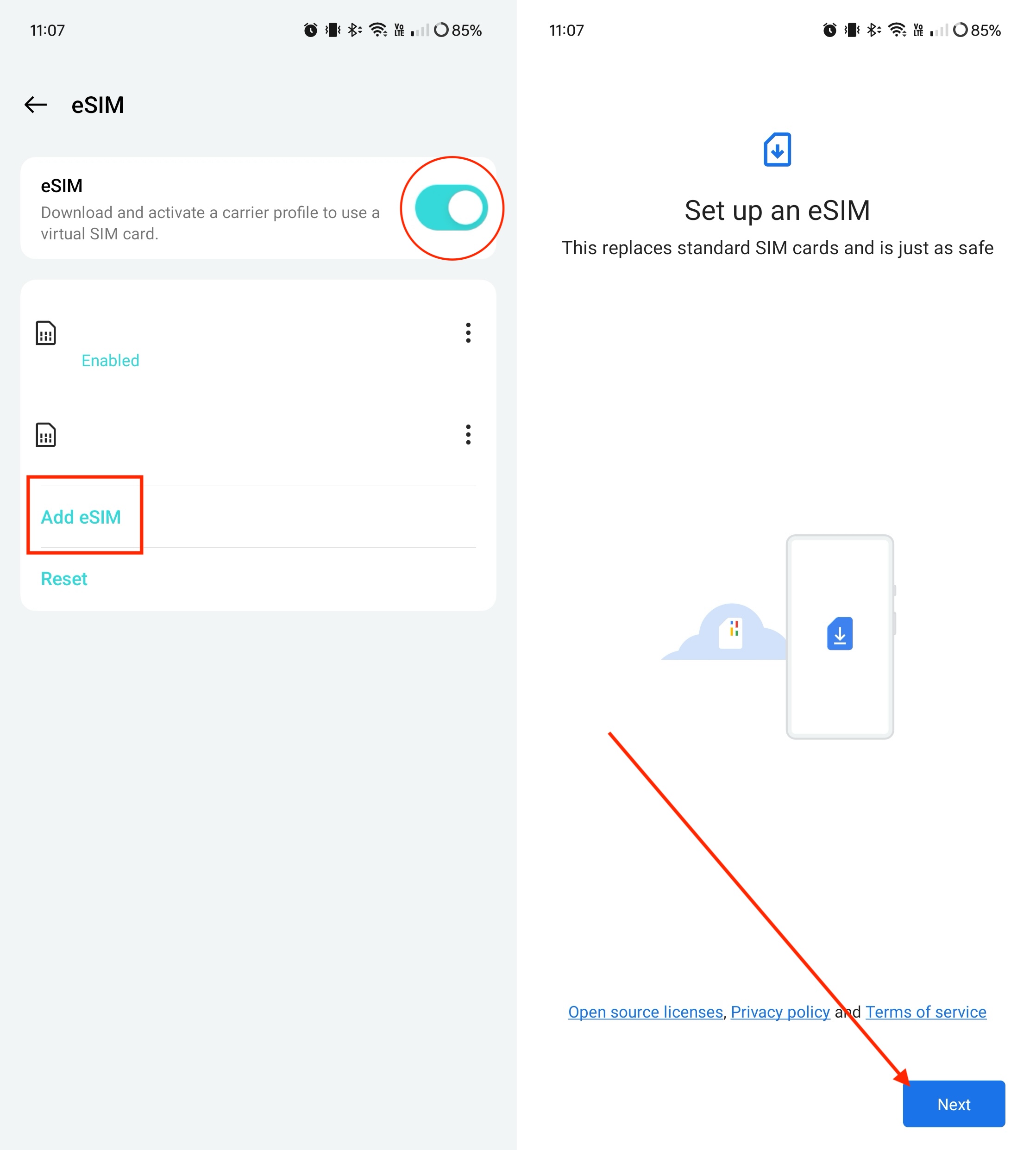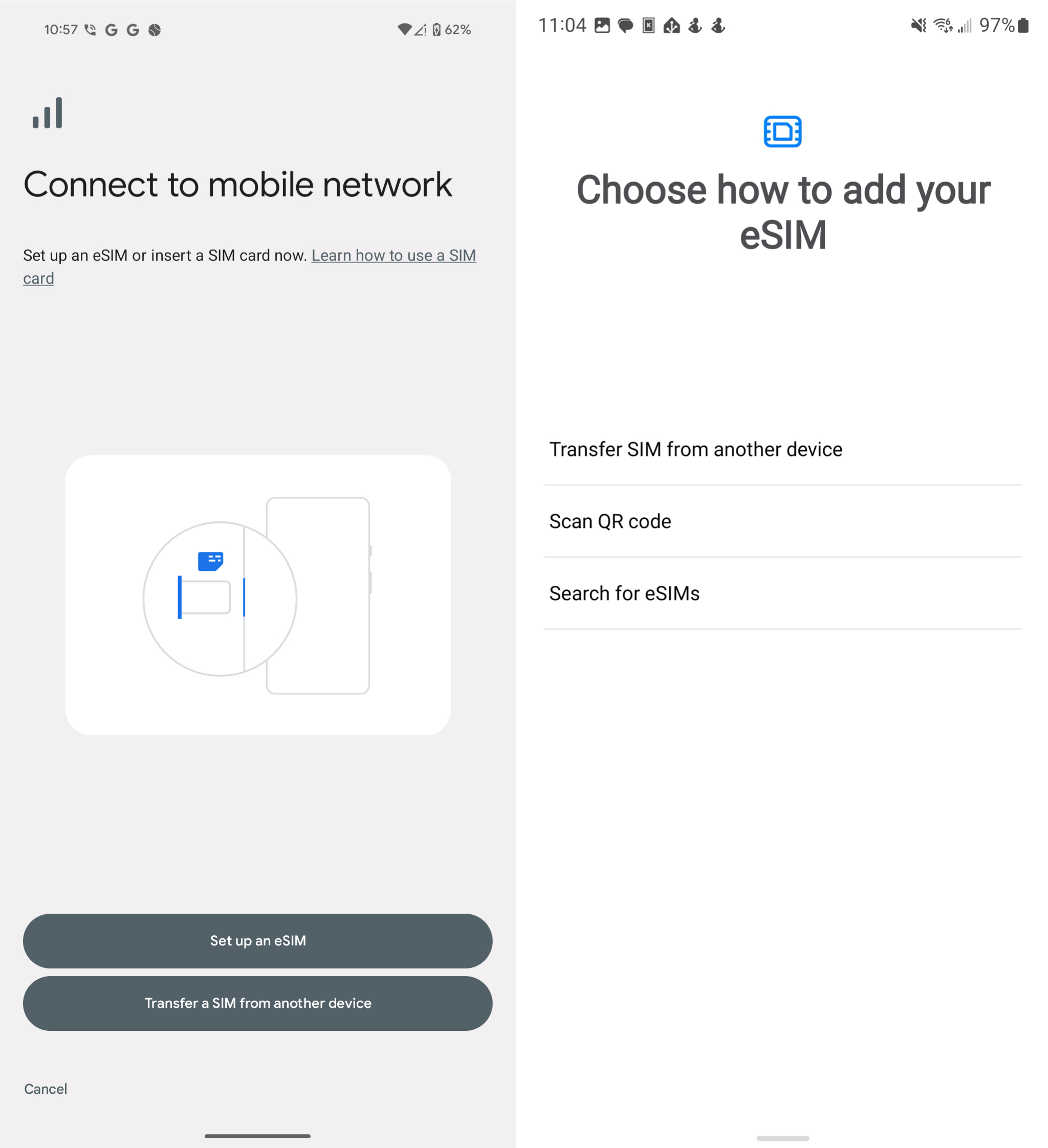In recent years, we’ve seen a rise in the adoption of using an eSIM to connect your phone to a mobile network. In theory, being able to set up and use eSIM on Android offers more flexibility. However, getting things up and running isn’t as easy as just popping out a physical SIM card and swapping it over to a new phone.
Here’s everything you need to know about eSIM and how to get one on your Android phone
What is eSIM?
By using an eSIM, you are essentially downloading all of the necessary carrier data directly to your phone. Previously, this was primarily handled by a physical SIM card provided by the carrier. However, as phones have continued to mature and improve, so has the reliability and versatility of using an eSIM.
One of the best reasons to use an eSIM is that you shouldn’t need to go into a physical store to activate your phone. You can do it from wherever you are, provided that you have a stable Wi-Fi connection.
Another benefit of using an eSIM on Android is the option to use multiple phone numbers on a single device. This is great if you are traveling abroad and don’t want to incur roaming fees, as you can simply turn off the physical SIM connectivity and rely solely on the eSIM.
Thankfully, we haven’t seen any of the best Android phones ditch the physical SIM card slot. However, the same can’t be said for the iPhone, as Apple removed this option starting with the iPhone 14.
How to use eSIM on Android

By and large, setting up and starting to use eSIM on Android is a fairly straightforward process. If you purchase a phone from a carrier, then most of the legwork is already done for you. All you’ll need to do is turn off your old phone, turn on your new phone, and go through the initial setup process.
However, if you already have a phone (or purchased one unlocked), you’ll need to find a carrier, make sure your phone is compatible, and sign up for a plan. Whether it’s because you’re switching to a new carrier with your old phone or want to move your existing number to a different phone, we’ve got you covered.
Set up and use eSIM on Pixel phones
1. Open the Settings app on your Pixel phone.
2. Tap Network & internet.
3. Tap SIMs.
4. Select + Add SIM.

5. Tap the Set up an eSIM button.
6. Select your network.
7. Follow the on-screen steps.

These instructions are largely similar for phones that follow the “stock” Android UI, like Motorola phones, although there will be some slight differences in working or layout.
Set up and use eSIM on Samsung Galaxy phones
1. Open the Settings app on your Samsung phone.
2. Tap Connections.
3. Scroll down and select SIM manager.
4. Tap the Add eSIM button.

5. Select either Scan QR code or Search for eSIMs.
6. If choosing Search for eSIMs, select your carrier.
7. Otherwise, follow the on-screen steps to complete the setup process.

Set up and use eSIM on OnePlus phones
1. Open the Settings app on your OnePlus phone.
2. Tap Mobile network.
3. Tap eSIM.

4. Make sure eSIM is enabled at the top of the screen.
5. Tap Add eSIM.
6. In the bottom right corner, tap the Next button.

7. Follow the on-screen steps to complete the eSIM setup process.
Can you transfer an eSIM?

After making its debut at MWC 2023, Google’s eSIM Transfer Tool is finally available. Meanwhile, Samsung introduced an eSIM transfer tool of its own with One UI 5.1. Unfortunately, not every phone maker or carrier is onboard with offering the ability to transfer an eSIM just yet. However, we hope that will change as pretty much every phone from the past few years includes an eSIM.
Here’s how to transfer your eSIM from one Android device to another.
1. Go through the steps above for either your Google Pixel or Samsung Galaxy device.
2. If using a Pixel, tap the Transfer a SIM from another device button on the Connect to mobile network screen.

3. If using a Samsung, tap Transfer SIM from another device on the Choose how to add your eSIM screen.
4. Follow the on-screen steps to complete the transfer process.
There are benefits, and headaches to using an eSIM

While touted for its versatility and ease of use, not everything is rosy in the world of using an eSIM. For instance, if you have an iPhone 14 or iPhone 15, are using an eSIM, and want to switch to an Android phone, the process is a pain in the neck. Even with Google or Samsung’s built-in eSIM transfer tools, the process will likely result in you needing to call your carrier or go into a store.
But as already stated, there are plenty of benefits to using eSIM, and things should only get better as support for the tech improves.
👇Follow more 👇
👉 bdphone.com
👉 ultraactivation.com
👉 trainingreferral.com
👉 shaplafood.com
👉 bangladeshi.help
👉 www.forexdhaka.com
👉 uncommunication.com
👉 ultra-sim.com
👉 forexdhaka.com
👉 ultrafxfund.com
👉 ultractivation.com
👉 bdphoneonline.com